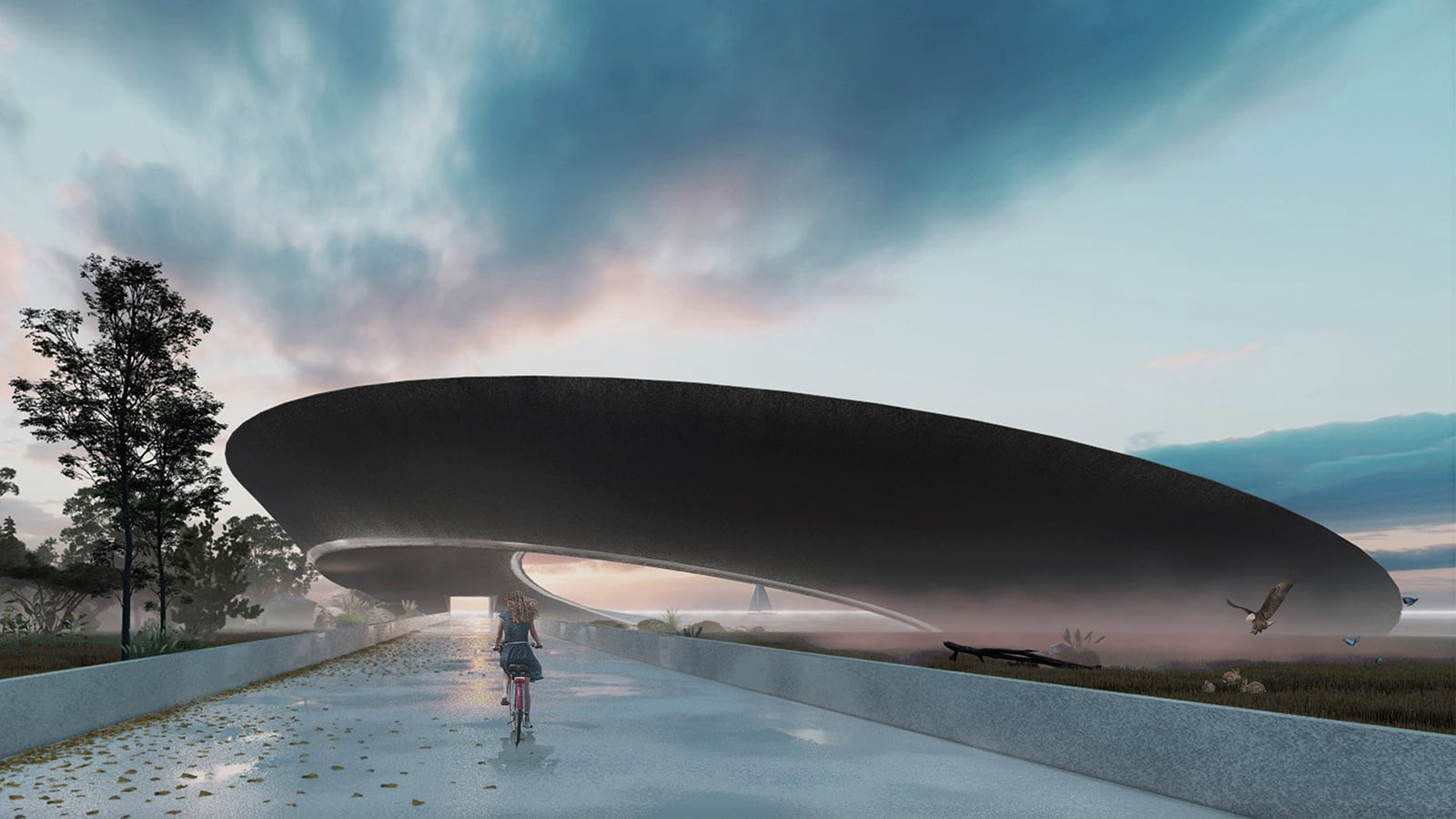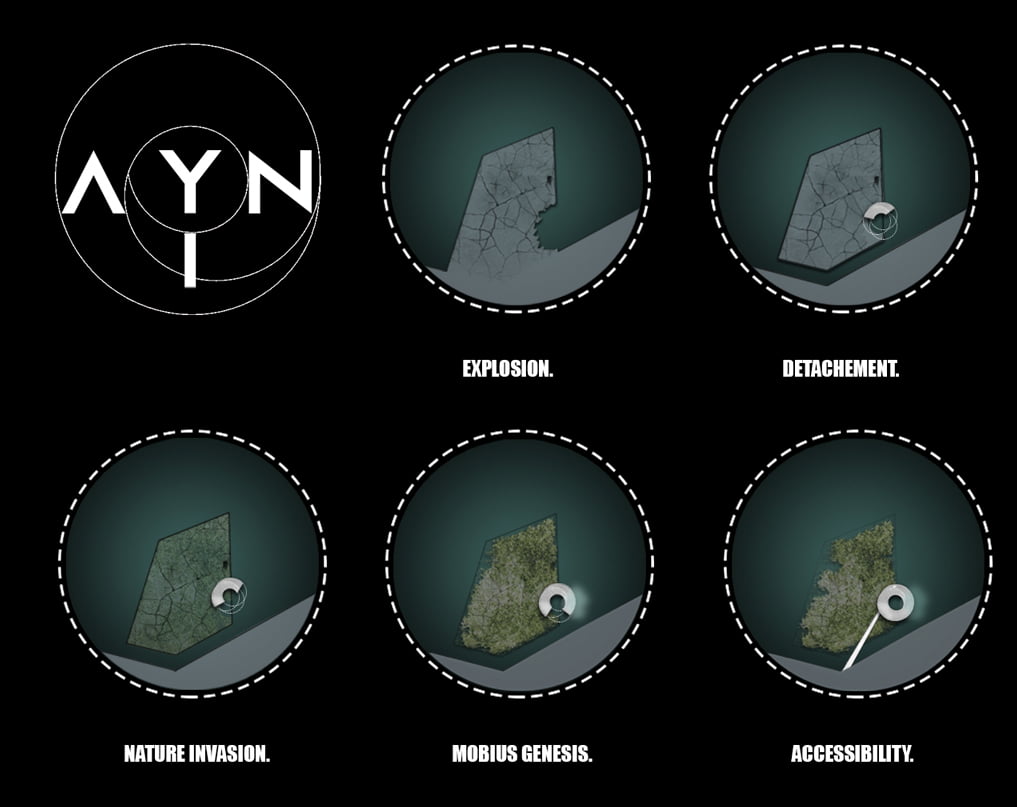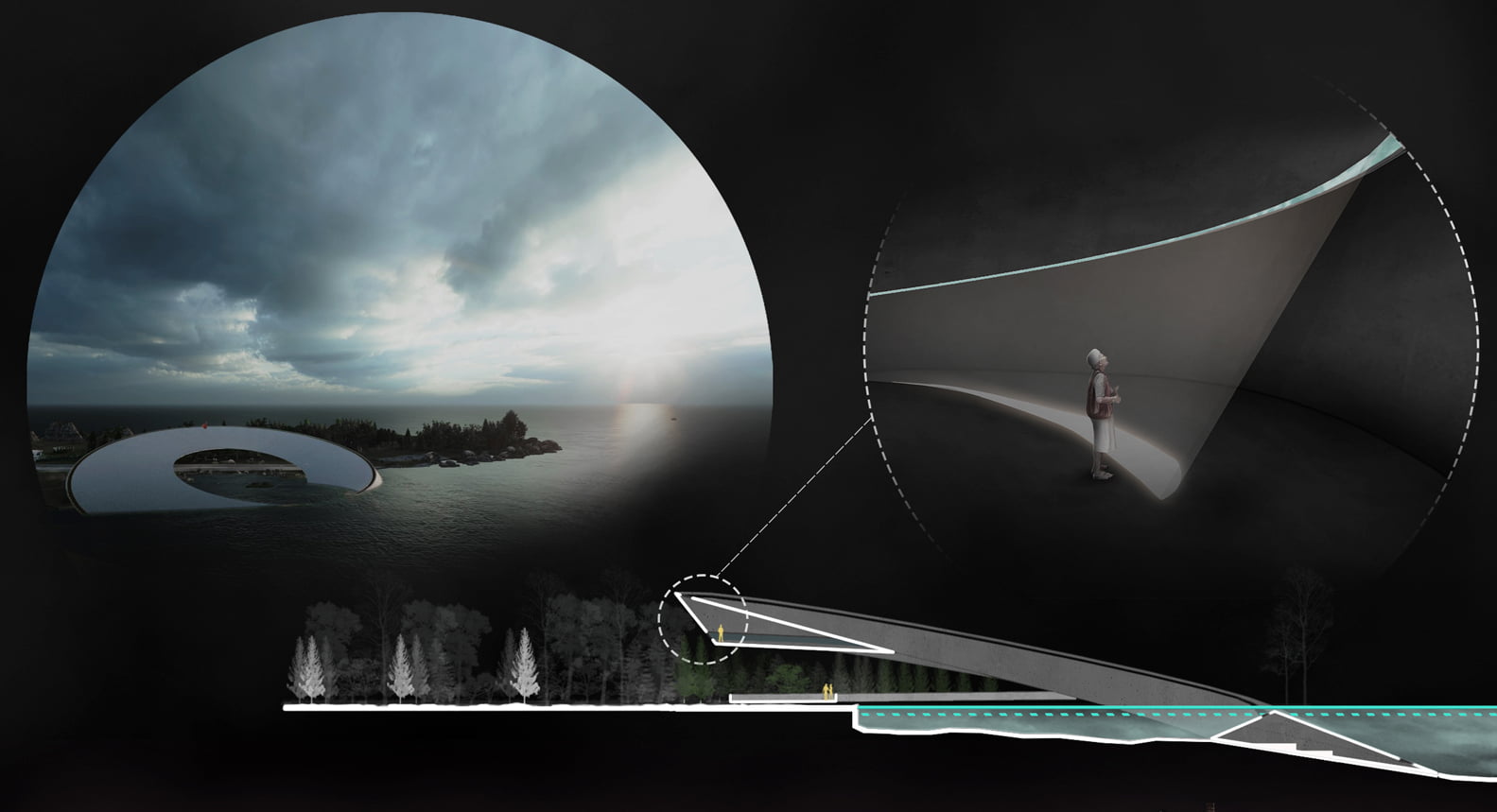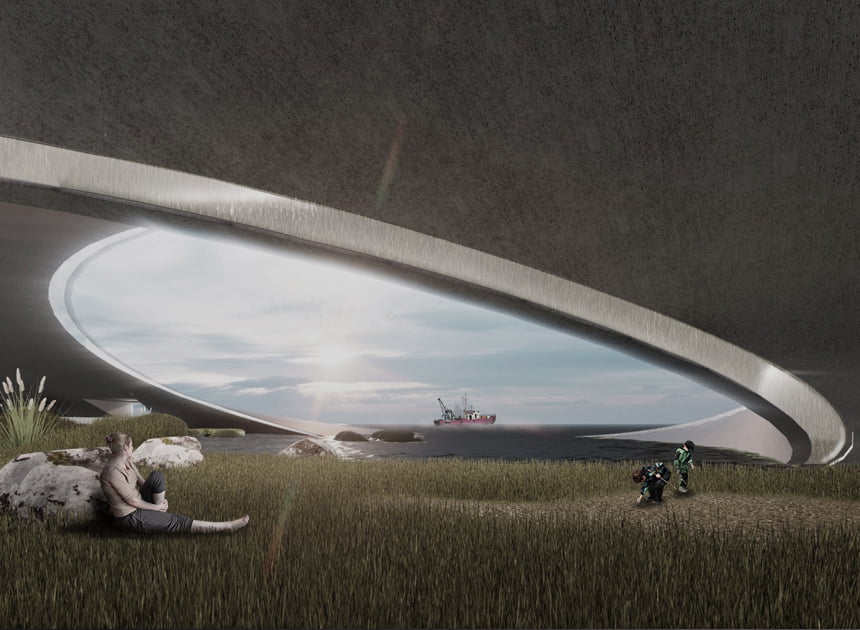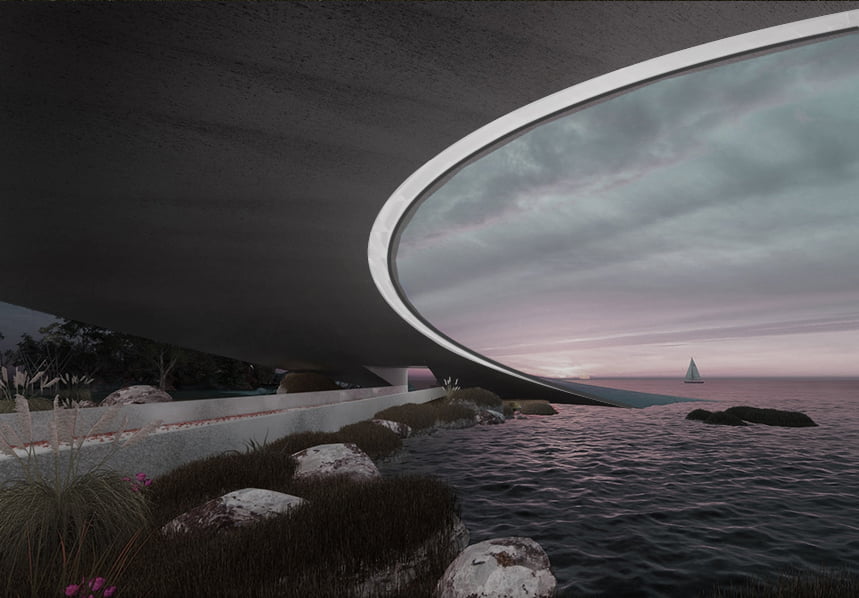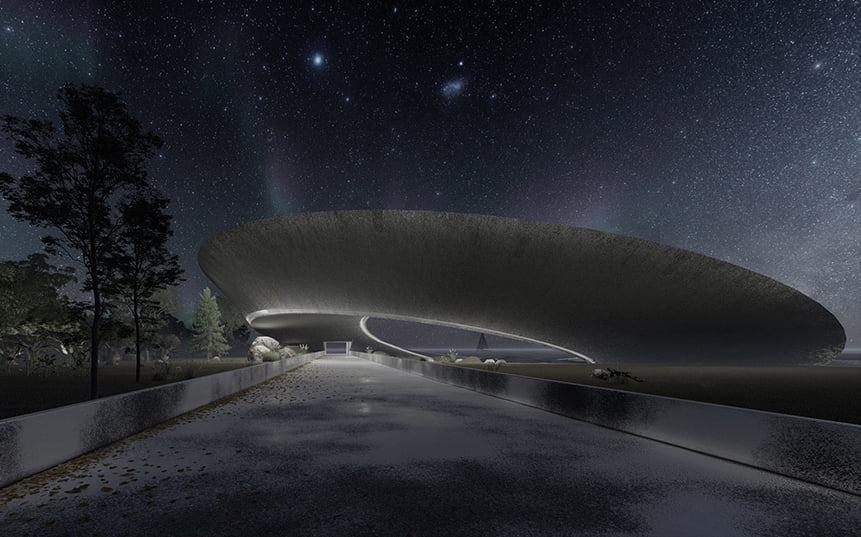Ayn O
Location: Beirouth, Lebanon
Project Duration: 2020
Status: Competition
Project Summary
Ayin O, as this Phoenician’s alphabet letter holds deep historical and cultural meanings; our proposed memorial will be holding for the Lebanese people a place to remember and to honor the victims of the explosion. Likewise, it will offer a haven for healing and new beginnings.
Adding to its popular mythological powers of keeping evil and harm away, Ayin- in the Phoenician culture as in other ancient cultures- symbolizes a path into the soul and an opening into new dimensions. Hence, we conceived Ayin [the memorial] as a path to remembrance, moreover as a harbor for a future of hope and solidarity. We pictured this vision implemented on the exact location of the blast. Indeed, we intended to take this site with all its negative denotations and transform it into a natural park of reconciliation. To emphasize our idea, we detached the site from the port’s dock consequently from the mainland so we create an island; a refuge for unity and contemplation.
The island, on one hand, symbolizes a physical rupture with the current situation in Lebanon: an organic safe plaza to gather and interact. On the other hand, it represents a green getaway in a condensed urban fabric; a real demonstration of a nature invasion. We designed the island to be raw; as if there were no human intervention when it comes to landscaping, as if after the explosion the site was abandoned for centuries and nature was given the chance to take over again. Wild weeds growing through cracked concrete, delicate plants blooming on hostile grounds, and trees erected on uneven and rocky at times grounds, are sceneries that we created to add the poetic symbolism of rebirth to those of the island.
Ayin is accessible from both the dock, through a pedestrian bridge, and the sea through boat tours. Visitors taking the bridge will be roaming a long concrete path leading directly to the waterfront, giving them time and space to reminisce and reflect while being surrounded by greenery from the sides and taken-in by a Mobius shaped construction from the waterfront.
We placed the Mobius on the waterfront as if it was ascending from the ground-hole left by the blast, with its lower part partially under water, the Mobius gives the impression of rising up, not only from bottom to top but also from past to future. The choice of concrete came along with the Mobius’ majestic scale in expressing both stability and durability. The form might seem rigorous, however, it is intriguing in its non-duality; despite the illusion that it gives of having two-sides and two edges, the Mobius actually is a one endless band that stimulates the concepts of infinity and unity.
Coming from the bridge, visitors are lead towards a rectangle opening in the Mobius that offers a direct perspective to the sea; a poetic window to the unknown, furthermore a gate that from the side takes us whether into the Mobius’ interior or to its upper surface. Inside, we find a lower part dedicated to honor the victims and document the blast. Walking through this section is a sensorial experience, the dimmed lightening provided by a zenithal opening guides us along raw concrete walls on which inscribed the names of the victims, as the path might be emotional the sound of the waves crashing on the exterior walls is there to remind us of life. On the upper part we find a gallery designed to hold civic events encouraging exchange and discussion.
In conclusion, we designed Ayin to be a living place, not just a monument dedicated to the past.
Allrights reserved – Hasni and Hasni Architects 2024

